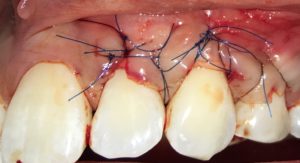Monthly Archives: May 2016
Are Long Terms Results for Collagen Matrix Comparable to Autogenous Tissue for Root Coverage?
Methods:
Collagen matrix used with a coronally advanced flap was compared to a connective tissue graft used with a coronally advance...
Does Suture Removal Time Affect Root Coverage Outcome?
Methods:
A meta-analysis of randomized clinical trials that assessed single tooth class I or II recession defects treated surgically ...



